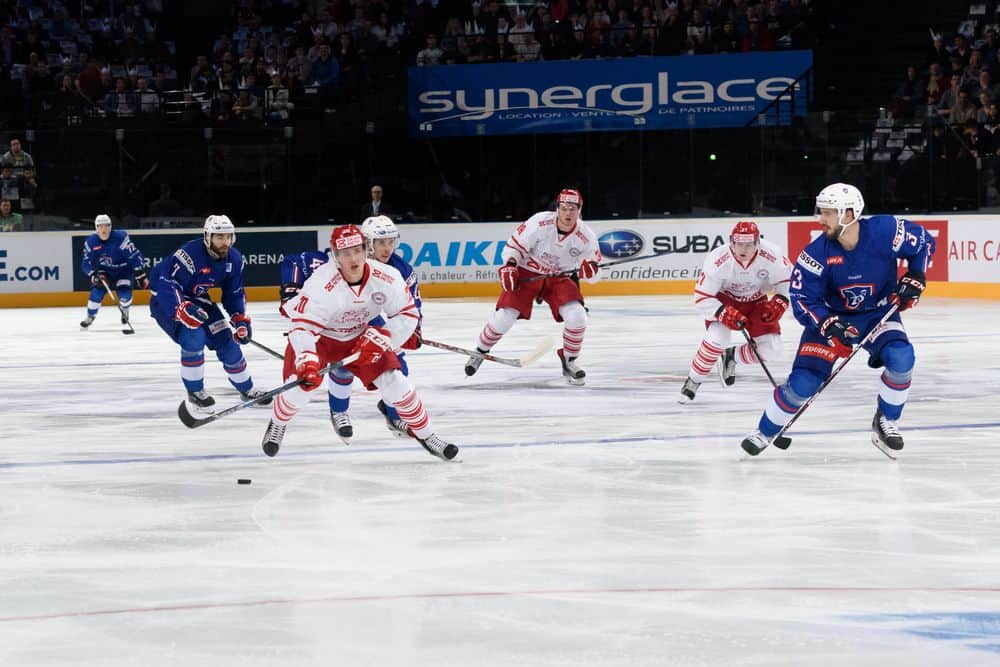In the vast realm of professional ice hockey, the composition of an NHL team’s roster is a captivating subject, brimming with significance and intrigue. Like a symphony composed of skilled athletes, the intricacies of player limits and regulations are of paramount importance to team management, player development, and game strategy.
In this article, we embark on a journey of exploration, unraveling the threads that weave together the tapestry of an NHL team’s roster, shedding light on the historical evolution, active roster players, game day participants, and much more.
Welcome to the captivating world of NHL team rosters.
Reserve List and Signed Players
When considering the composition of an NHL team, it is important to understand the implications of the reserve list and the status of signed players.
The reserve list plays a significant role in determining the team’s roster size. NHL teams are allowed to have a maximum of 90 players on the reserve list, which includes unsigned draft picks, signed players in Junior, and those playing overseas.
However, during the season, teams can only have up to 50 players signed to a contract. This limit includes active roster players, players on injured reserve, players on long-term injured reserve, NHL contracted players in the minors, AHL players signed to a two-way contract, and even entry-level contracts.
The impact of the reserve list on team roster size is crucial in determining the team’s depth and the importance of signed players in building a strong and competitive team.
Active Roster Players
The composition of an NHL team’s roster is determined by the number of active roster players, which is a crucial aspect of team management. Here are some key points regarding active roster size:
- Minimum number of active roster players: NHL teams must carry a minimum of 20 active roster players. This ensures that teams have enough players to field a team for games and have depth in case of injuries or other unforeseen circumstances.
- Maximum number of active roster players: From the start of the regular season until the NHL trade deadline, teams can have a maximum of 23 active roster players. This allows teams to have some flexibility in their lineup choices and provides an opportunity to give more players a chance to contribute.
- No limit after the trade deadline: After the trade deadline passes, there is no longer a limit on the number of active roster players. This allows teams to make adjustments and additions to their roster as they see fit for the remainder of the season and playoffs.
- Importance of active roster management: Having the right number of active roster players is crucial for team success. It allows teams to have a balanced lineup, the ability to adapt to different game situations, and the necessary depth to withstand injuries and fatigue throughout a grueling NHL season.
Game Day Players
NHL teams dress a maximum of 20 players for each game, including 18 skaters and 2 goalies.
The number of forwards and defensemen dressed is at the coach’s discretion, although the typical configuration is 12 forwards and 6 defensemen. However, variations such as 11 forwards and 7 defensemen or 13 forwards and 5 defensemen can occur based on the coach’s strategy and the team’s needs for a specific game.
The selection of game day players is an important decision made by the coach, taking into account factors such as player performance, injuries, and the opponent’s style of play. The coach’s goal is to create the most effective lineup that maximizes the team’s chances of winning.
Game day player selection is a dynamic process that requires careful consideration and expertise from the coaching staff.
History of NHL Team Roster Sizes
Throughout its history, the NHL has seen various changes in the sizes of team rosters. The evolution of roster sizes has had a significant impact on team strategies. Here is a brief overview of the history of NHL team roster sizes:
- 1925-26: The minimum roster size was 12 players, with a maximum of 14 players.
- 1938-39: The maximum roster size increased to 15.
- 1942-43: The maximum roster size reduced to 14, with no minimum requirement.
- 1954-55: The number of dressed players increased to 18 plus goalies.
These changes in roster sizes have forced teams to adapt their strategies accordingly. With fewer players available, teams had to rely on their core group for longer periods of time, leading to increased fatigue and potential injuries.
As roster sizes increased, teams gained more flexibility in terms of player rotations and line combinations. These adjustments have shaped the game and influenced the way teams approach their roster management and game strategies.
Miscellaneous Facts
During the regular season, NHL teams are allowed to have a maximum of 23 active roster players. However, after the NHL trade deadline, there is no limit on the number of active roster players a team can have. NHL teams must also carry a minimum of 20 active roster players. In addition to the active roster, teams can have up to 90 players on their reserve list and up to 50 players signed to a contract during the season. Entry-level contracts and prospects in the CHL or Europe have specific criteria for counting towards the roster limit. This ensures that teams have the flexibility to make roster moves and manage their player development effectively. Overall, the NHL has implemented rules and regulations to maintain a balance between team size and player development.
| Fact | Description |
|---|---|
| Prospects criteria | Prospects under contract with an NHL team in the CHL or Europe don’t count until they have played a minimum of 11 NHL games in a season. |
| NHL trade deadline | Until the NHL trade deadline, teams can have a maximum of 23 active roster players. After the trade deadline, there is no limit on the number of active roster players. |
Frequently Asked Questions
How Are Injured Players Accounted for in the NHL Roster Limits?
Injured players on NHL rosters are accounted for within the roster limits. The salary cap implications for injured players in the NHL vary depending on factors like the player’s contract and the length of their injury.
What Happens if a Team Exceeds the Maximum Number of Contracted Players During the Season?
If a team exceeds the maximum number of contracted players during the season, they may face consequences such as fines, loss of draft picks, or other disciplinary actions. It is important for teams to adhere to the roster limit to avoid violations.
Are There Any Restrictions on the Number of Goalies a Team Can Have on Their Reserve List?
There are no specific restrictions on the number of goalies a team can have on their NHL reserve list. However, having depth in the goalie position is crucial for NHL teams due to the demanding nature of the position and the need for reliable backup options.
Can a Team Call up Players From Their AHL Affiliate Without Affecting Their Roster Limits?
Yes, NHL teams can call up players from their AHL affiliate without affecting their roster limits. This call-up process allows teams to temporarily add players to their active roster for a specified period of time.
In the History of NHL Roster Sizes, Have There Been Any Seasons With Fewer Than 18 Players Dressed for a Game?
Throughout the history of NHL roster sizes, there have been no seasons with fewer than 18 players dressed for a game. However, due to the impact of COVID-19, roster limits and game day procedures may have been subject to temporary changes.
Conclusion
In conclusion, understanding the composition of an NHL team’s roster is essential for team management and game strategy.
From the reserve list to the active roster and game day participants, there are specific regulations and limitations on the number of players allowed on a team.
The historical evolution of roster sizes in the NHL has also played a significant role in shaping the dynamics of roster management.
By delving into these intricacies, we gain a comprehensive understanding of how many players can be on an NHL team at any given time.









